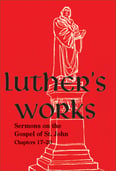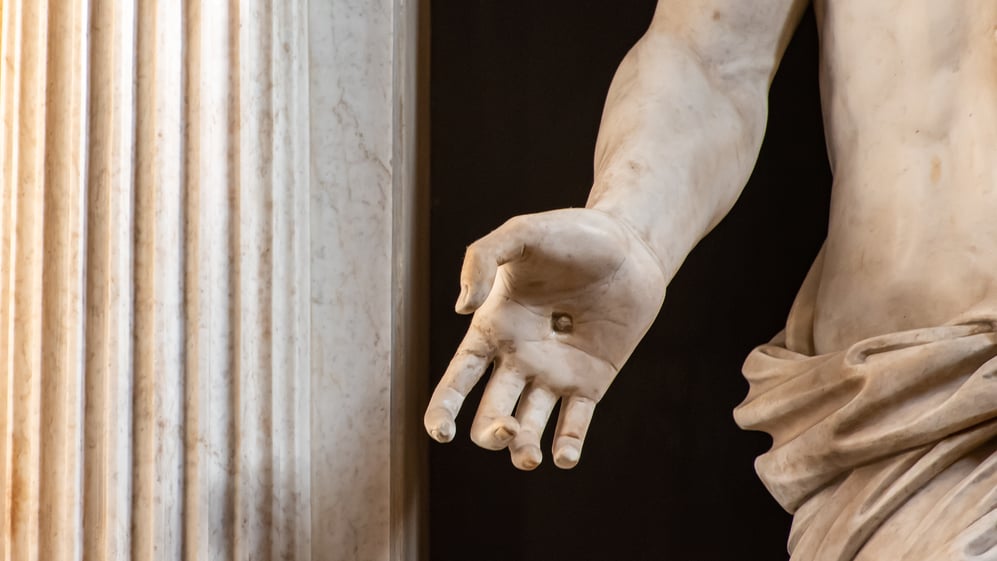When we use the expression “take my word for it,” we are asking another person or group to trust that what we are saying is true. More specifically, we are asking this person or group to trust us. The strength of the relationship is as central as the truth being shared. Consider how many things we take on the word of another. Grandparents share events which took place in family history decades before we were born. Historians teach of wars that shaped the course of human history as if they had been there themselves. Friends and family tell us of places to which we have never been. Although we have never experienced these events and places firsthand, we believe the words of those we trust. The same can be seen in God’s Word.
Jesus appears to His disciples in the evening after His resurrection. The disciples share the news with Thomas, who was not with them at the encounter with the risen Lord. They ask their fellow disciple to take their word for it. Incredulous, Thomas responds,
Unless I see in His hands the mark of the nails, and place my finger into the mark of the nails, and place my hand into His side, I will never believe.
What follows for the disciples is a profound experience of Jesus’ grace, forgiveness, and revelation.
Noteworthy Details
Jesus appears to most of His Twelve for the first time the evening after His resurrection. He appears a second time one week later. Jesus rose from the dead on the first day of the week, also referred to as the eighth day. The first (or eighth) day signifies newness, a beginning. Jesus chooses to appear the second time, again on the first day of the week to highlight the day of His resurrection. Christians worship on Sunday for the same reason. Although Monday is considered the first day of the work week, Sunday remains the first day for things sacred.
In John 20:19–31, Jesus three times bids His disciples, “Peace be with you.” This threefold repetition puts us in mind of the Trinity—Father, Son, and Holy Ghost—as well as Jesus’ resurrection on the third day. There are other threes in Scripture. Three represents completion, totality, or perfection. Jesus has completed His work on the cross and risen. He offers the disciples a total or perfect peace.
Immediately after the third “Peace be with you,” the risen Lamb breathes on the disciples, giving the Holy Spirit. This act anticipates the coming of the Holy Spirit on Pentecost fifty days later. Jesus equips the disciples with His Holy Spirit for the work ahead, anticipating His departure from them visibly at the ascension. It is also noteworthy that as God created Adam, He breathed into his nostrils the breath of life, and Adam became a living being. The Spirit brings life!
Sin and Disbelief in Humanity: Law
Sin is at the root of all distrust of God. In the Garden of Eden, before the fall, Adam and Eve trusted God completely. Before the fall, the first couple would never have thought to distrust as Thomas did, let alone doubt the very existence of God as so many do today. Within sin there are two ways in which fallen humanity fails in relation to trust. First, in our sinful nature, we are unable to trust in God. We are in fact blind, dead rebels against Him. Second, even as Christians, we are apt to stray from the Shepherd, doubting His promises and instead listening to the voices of the world. We doubt God’s presence, love, and salvation provided by His Son, Jesus Christ.
Believing through Faith: Gospel
Jesus delivers unmitigated grace to Thomas despite his doubting. John notes that at both of Jesus’ appearances to the disciples, the doors were locked. Jesus displays His divinity by arriving among the disciples despite door and lock. He then demonstrates His humanity by inviting Thomas to place his hand in our Lord’s side. This is the Christ, true God and true man! This is the Jesus who was nailed to the cross and pierced by the soldier’s spear. In addition, Jesus increases Thomas’s faith by what theologians call performative speech. Performative speech is when God makes something happen merely by His words. In this case, as Jesus mandates, “Do not disbelieve, but believe,” our Lord enables Thomas to believe. With both a demonstration of evidence and His words, Jesus fixes Thomas’s problem of disbelief. Other examples of performative speech include God creating light simply be speaking “Let there be light” (Genesis 1:3) and bringing Lazarus back to life through His words, “Lazarus, come out” (John 11:43).
The passage nears conclusion with verse 29:
Jesus said to him, “Have you believed because you have seen Me? Blessed are those who have not seen and yet have believed.”
Today, we are part of those who have not seen and yet believe. We are not blessed because of our merits, good works, or ability to believe in Jesus without seeing Him in person as did the disciples. Quite the contrary. We are blessed because God in His Holy Spirit has created saving faith in our hearts through the means of grace, the Word and Sacraments. We can say, “My Lord and my God!” with Thomas because Jesus has called us out of darkness into His marvelous light. What is more, the Holy Spirit maintains this saving faith by bringing Jesus before our eyes in the reading of Holy Scripture, in Holy Baptism, and in the Lord’s Supper. Through these means Jesus bids us, “Peace be with you”!
Scripture: ESV®.
 Learn more from John 20 with commentary by Martin Luther in Luther’s Works, volume 69.
Learn more from John 20 with commentary by Martin Luther in Luther’s Works, volume 69.













